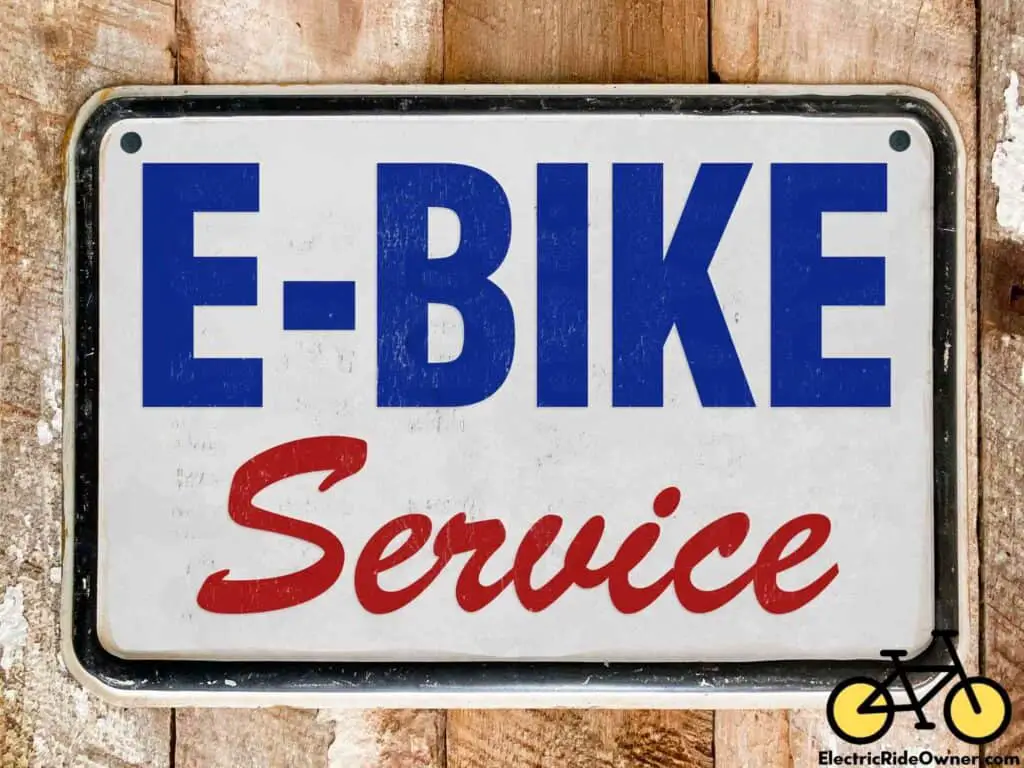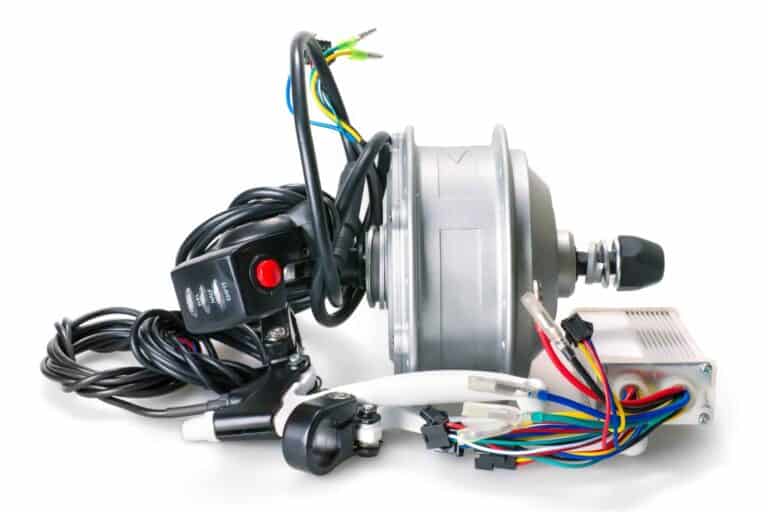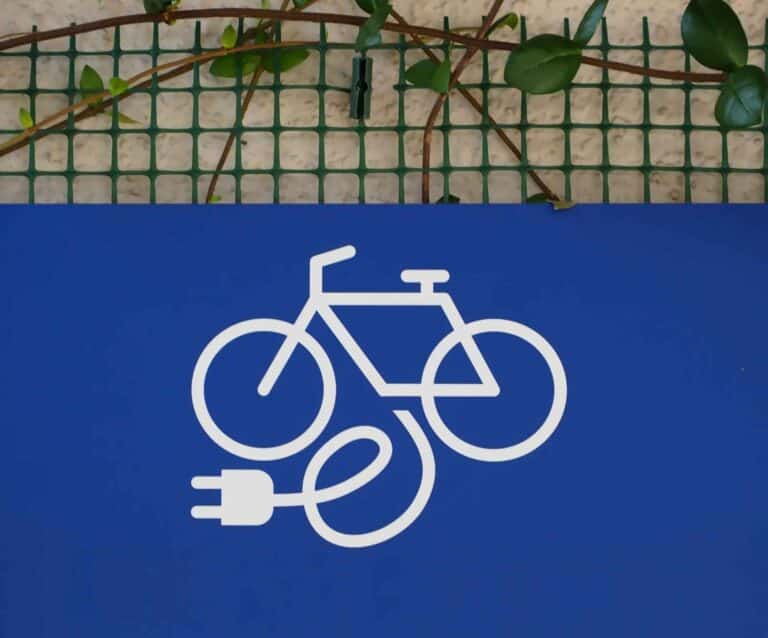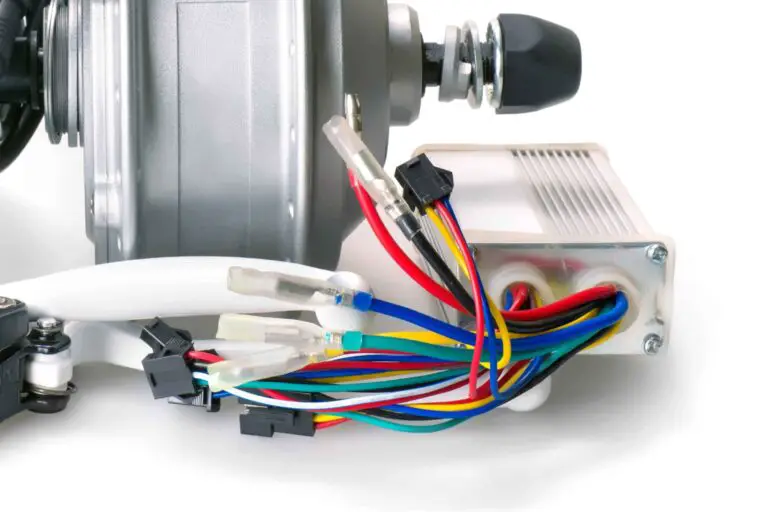Samsung eBike Battery VS LG (We Tested and Results Are In)
Recently, I discovered I needed to replace my electric bike battery, but I can’t decide between choosing a Samsung or an LG e-bike battery. So, I conducted a thorough comparison to compare Samsung and LG batteries in various aspects, such as their purchase cost, reliability, maintenance costs, lifespan, running costs, range, and their respective pros and cons.
As a whole, the LG e-bike battery is better than the Samsung e-bike battery. LG is considered to be the world’s number one lithium-ion battery supplier for electric bikes. LG manufactures its batteries to the highest standards which results in incredible battery life, capacity, range, and reliability.
Between Samsung and LG e-bike batteries, which one is better when we compare battery life, range, lifespan, and reliability? I created a detailed comparison of Samsung and LG e-bike batteries, which I outlined below. We are also going to dive into the pros and cons of Samsung ebike and LG electric bike batteries.
Samsung Ebike Battery VS LG Ebike Battery
| Manufacturer | Purchase Cost | Running Cost | Cost of Maintenance | Range per charge | Battery Capacity(Wh) | Charging Time | Life Span | Reliability |
| Samsung | $180-$900 | $0.14/kWh | $0-$150 | 30-40+ miles | 360-1000Wh | 3-7 hours | 3-5 years | Reliable when properly maintained |
| LG | $180-$800 | $0.14/kWh | $0-$150 | 30-50+ miles | 360-1000Wh | 3-7 hours | 3-5 year | Reliable when properly maintained |
Purchase Cost: Samsung eBike Battery Vs. LG eBike Battery
As a whole, a Samsung e-bike battery costs $180-$800, whereas an LG e-bike battery costs $180-$900. A Samsung e-bike battery pack can be slightly more expensive than an LG e-bike battery pack, but the cost of each cell of LG and Samsung batteries is almost the same at $1-$4 per cell.
On average, the cost of a Samsung e-bike battery is greater than an LG e-bike battery. In most cases, the battery price depends on the brand, the number of cells inside the pack, and the battery’s capacity.
LG and Samsung both manufacture high-quality lithium-ion battery cells. Li-ion battery cells provide high efficiency while delivering solid performance. These batteries have longer lifespans and battery life than other types of batteries. Some battery pack manufacturers that make battery packs out of LG and Samsung battery cells include X-Go, MXS, and Unit Pack Power.
One of the most expensive batteries I’ve seen so far with LG battery cells costs $846. This battery pack is a triangle e-bike battery made by Unit Pack Power. It holds 100 LG 18650 lithium-ion battery cells that have 3500mAh capacity with a BMS20A board. Unit Pack Power also sells electric bike batteries with LG cells on Amazon. Check out this 48V 16Ah e-bike battery.
You also have the option to choose charger and discharge connectors.
On the other hand, one of the most expensive batteries I’ve seen with Samsung cells costs $920. It has 100 Samsung lithium-ion cells with a 3500mAh capacity. Unit PowerPack also makes this battery pack. This battery pack contains a BMS20A board with an optional charger and discharge connectors.
However, batteries with LG and Samsung cells sold on Amazon can cost as low as 180 dollars.
Not all batteries are compatible with all electric bikes, so before you decide which one to buy, you should consider which type of battery is compatible with your electric bike. If you would like to learn more about what electric bikes batteries cost in general, check out our article Electric Bike Battery Cost (A Helpful Chart)

Maximum Range: Samsung eBike Battery Vs. LG eBike Battery
As a general rule, Samsung e-bike batteries can power an eBike to travel a distance of 30-40 miles or more with a single charge. On the other hand, LG e-bike batteries can allow an electric bike to travel a distance of 30-50 miles or more per charge.
The potential distance you can travel per charge with each of these batteries depends on different factors, such as the type of terrain on which you are riding, your level of pedal assist, and your weight.
Your battery will last longer if the terrain is smoother irrespective of the brand. However, with both Samsung and an LG e-bike battery, you will need more energy from the battery if the road is rough or rocky. Thus, decreasing your overall battery life.
Another factor that can decrease battery life is your chosen level of assistance. For example, if your pedal assist level is set relatively high, your battery is likely to drain very quickly. For example, suppose you have an e-bike with a Samsung battery, and you set the pedal-assistance level to one. It will probably last much longer than an e-bike with an LG battery set to pedal-assist level five.
Your weight is another factor that can drain your battery quickly. If the load on your electric bike is heavier, you will need more energy from your battery to propel your e-bike forward, resulting in a lower overall range.
Battery Capacity of Samsung Vs. LG
As a whole, there is no considerable difference in the capacity of Samsung and LG e-bike batteries. Their overall capacities depend on how each particular battery pack manufacturer created them. Their battery capacities can be 360watt-hour or lower, or 1000 watt-hour or higher.
The capacity of Samsung and LG cells (in watt-hour) depends entirely on how each e-bike battery pack manufacturer created them. Most Samsung and LG battery cells have a voltage of 36V or 48V. If you would like to learn more about the difference between 36 V and 48 V batteries, feel free to check out our full article on it. . E-bike battery pack manufacturers usually paired these cells with as low as 10Ah or as high as 35Ah.
As a result, Samsung and LG batteries can have anywhere from a 360 watt-hour capacity to even greater than 1000 watt-hour.
Charging Time: Samsung Vs. LG
On average, it takes 3-7 hours to charge both Samsung and LG electric bike batteries fully. When your Samsung or LG e-bike battery drains completely, expect it to take seven hours for the battery to reach a full charge of 100%.
There is not much difference between the charging time of Samsung and LG e-bike batteries. The charging time of these two brands is between 3-7 hours, depending on how drained your battery is. If your battery still has 10-30 percent left of battery life, it will probably take you three hours or less to fully charge your battery.
When charging your e-bike battery for the first time, charging it between 8-10 hours is recommended. That way, you can use the battery at its full capacity.
If you like to learn how long to charge your electric bike battery, check out our article: How Long Does an Electric Bike Battery Take To Charge

Life Span of Samsung eBike Battery Vs. LG eBike Battery
On average, there is no significant difference between the lifespan of Samsung and LG electric e-bike batteries. Both Samsung and LG batteries have an average lifespan of 3-5 years.
Samsung and LG batteries have a life cycle of 500-1000 cycles (18 months to three years). Cycle life means the number of complete charges and discharges until your battery reduces its performance to 80% of its rated capacity.
In that case, your Samsung or LG e-bike battery will start losing 20% of its rated performance after 18 months or three years.
With only 80% of battery capacity, your Samsung or LG e-bike battery can still work well. However, the rated capacity will decrease until it reaches 0% after five years of use or more.
Running Cost of Samsung eBike Battery Vs. LG eBike Battery
On average, there is no significant difference in the running costs of Samsung and LG e-bike battery packs. The average charging cost in the United States is $0.1412 per kilowatt-hour, which varies per state (Source).
LG and Samsung e-bike batteries’ running cost depends entirely on how often you charge your electric bike battery. But, of course, the more you charge, the higher the charging cost.
The computation of your charging cost goes like this:
First, you have to compute the kilowatt-hour of your battery. For instance, suppose you have an LG or Samsung e-bike battery with 36V and 35Ah. To calculate the kilowatt-hour, you have to multiply the Voltage and Amp-hours, then divide it by 1000.
So, (36V * 35Ah)/1000=1.26KWh
That means you can charge 1.26 kilowatt an hour. For example, suppose you are in Alabama with a charging cost of 0.1341 KWh.
In that case, multiply 1.26KWh by 0.1341 dollars, resulting in 0.1690 dollars an hour of charge.
Now, suppose it takes seven hours to charge your LG or Samsung e-bike battery fully. Then, 0.1690 dollars * 7 equals 1.183, which means you have to pay 1.183 dollars to charge your LG or Samsung e-bike battery.
Given this information, if you charge your e-bike once a day, you’ll likely have a running cost of $35.49 a month, regardless of the brand.
Maintenance Cost of Samsung eBike Battery Vs. LG eBike Battery
As a whole, there is no significant difference in the maintenance costs of the Samsung e-bike battery and LG e-bike battery. As a result, both battery packs may have a maintenance cost as low as zero or as high as 150 dollars.

Maintaining electric bike batteries, Samsung or LG, will not cost you much. Maintenance of e-bike batteries includes cleaning and storing, which will probably cost you very little to nothing.
However, if your battery needs repair, you might need to pay a professional service fee of around $150.
“Man’s brain may be compared to an electric battery, a group of electric batteries will provide more energy than a single battery.”
-Napoleon Hill
Reliability of Samsung eBike Battery Vs. LG eBike Battery
As a whole, Samsung and LG e-bike batteries are equally reliable if properly maintained. Samsung and LG are among the well-known and highly regarded manufacturers of battery cells for an e-bike. They both manufacture high-quality and reliable batteries.
When bought new, both Samsung and LG battery packs are very reliable. As long as you follow proper maintenance of these batteries, you probably won’t have a problem with their reliability.
You can follow the helpful tips below to keep your LG and Samsung e-bike batteries reliable for years.
- Remove your battery when cleaning your electric bike (if possible)
- Fully-charge your battery
- Store at 60%-80% charge
Remove Your Battery When Cleaning Your Electric Bike to Maintain Reliability
Removing your battery when cleaning your e-bike ensures that your battery is safe from getting wet. Removing a battery differs from one e-bike to another, so you must follow your e-bike’s manual. Always remember to mount your battery back correctly after cleaning.
In most cases, e-bike batteries are removable by a key. You can watch the video below to see how to remove an e-bike battery using a key.
Fully Charge Your Battery to Maintain Reliability
Another way to keep your LG or Samsung battery reliable is to fully-charged it, which will provide good battery life. In addition, always follow the proper charging and discharging process. Finally, charge and discharge your battery within the allowable temperature.
Store Your eBike Battery at 60-80% to Maintain Reliability
Suppose you plan to store your battery for an extended period. In that case, we recommend you charge the battery only to 80%. That is because storing your fully-charged battery can reduce battery life hence, reducing the battery’s reliability.
Aside from proper maintenance, ensure that you bought your Samsung or LG battery from a legit seller or dealer. Unfortunately, non-legit sellers usually use substandard and cheap components and deceive consumers. As a result, a high possible risk may occur upon using the battery.
Watch the video below to get helpful tips on how to maintain your e-bike battery.
Pros and Cons of Samsung eBike Battery
| Pros | Cons |
| 360-1000 watt-hour capacity | Since most of them are made of lithium-ion cells, they can be sensitive to temperature |
| Most are made of lithium-ion cells | Quite expensive (can be more expensive than LG e-bike battery packs) |
| Safe when used properly | Charging time can be as long as 7 hours |
| Mileage is shorter than LG |
Pros and Cons of LG eBike Battery
| Pros | Cons |
| 360-1000 watt-hour capacity | Since most of them are made of lithium-ion cells, they can be sensitive to temperature |
| Most are made of lithium-ion cells | Charging time can be as long as 7 hours |
| Makes use of high-quality premium battery cells | |
| Safe when used properly |
If you’re looking for ways to store your electric bike, read our published article titled “17 Electric Bike Storage Ideas You Can Actually Use (Home, Garage, Outside).”







